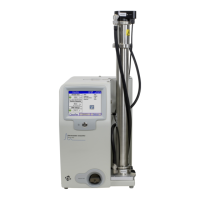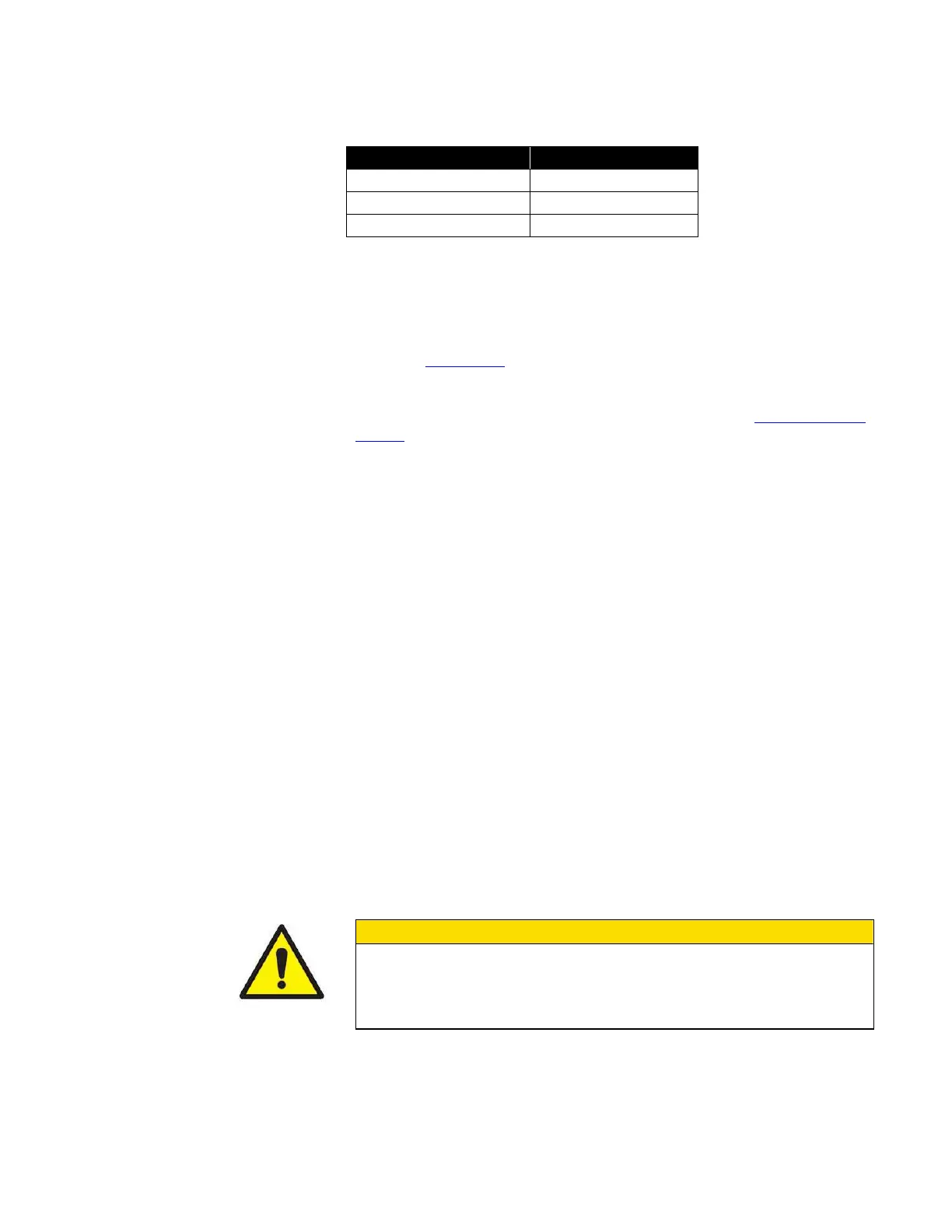Instrument Description 4-7
Table 4-1
Flow Range for Each Impactor Orifice
For SMPS spectrometer measurements—If the aerosol inlet flow allows
multiple selections of impactor nozzles (e.g., all three nozzles can be used
if the aerosol inlet flow rate is 0.7 L/min), use the nozzle with the cut-off
size closest to the upper limit of the SMPS spectrometer measurement
range. This will increase the accuracy of the Multiple Charge Correction
(compare Appendix B). The aerosol inlet flow rate, the corresponding cut-
off size for a selected nozzle and upper limit of the SMPS spectrometer
measurement range are shown in the properties window of both Aerosol
Instrument Manager software and the Classifier; see e.g., Using the Setup
Screen in Chapter 5.
Inlet Manifold
The inlet manifold provides a flow path for the aerosol inlet flow from the
inlet to the neutralizer. It also contains an assembly which makes electrical
contact with the memory chip on the impactor to read calibration
information.
Neutralizer Housing
The neutralizer housing is the cavity into which a 3077/3077A or 3088
neutralizer can be installed. At the bottom of the housing, a radial O-ring
(2501010) creates a seal with the neutralizer, ensuring a continuous and
leak-tight flow path. A momentary switch, also at the bottom of the housing,
senses when a 3077/3077A neutralizer is installed.
Flag Assembly
The flag assembly routes flow from the top of a 3077/3077A neutralizer
and out to the DMA. It is shipped standard with every Model 3082 and is
installed without a neutralizer. When installed with a neutralizer, a yellow
indicator flag is present indicating that a neutralizer is installed.
C a u t i o n
The yellow indicator flag indicates a neutralizer is installed. A classifier
should never be shipped with a 3077/3077A neutralizer installed due to
transport regulations of devices containing radioactive material. See
Model 3077 manual for proper transport and shipping protocol.

